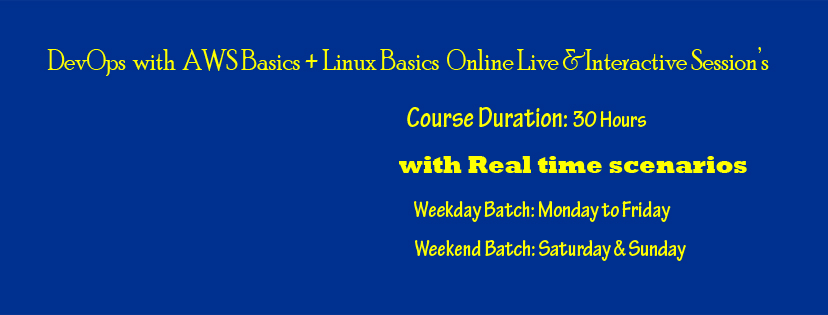
SAP BO4.2 ON HANA BW COURSE CONTENT
Course Duration: 35 Hours (Online)
Summary
- Introduction to SAP BOBJ Tools
- Introduction to SAP HANA
- Architecture
- SAP HANA with BOBJ connectivity
- SAP BW with BOBJ connectivity
- SAP Webi reporting tool
- Universe Designer tool (UDT)
- Information Designer tool (IDT)
- SAP Design Studio (on Hana and BW)
- SAP Lumira
- SAP Dashboard
- Crystal reporting tool
- Administration
- End to End Project implementation
Web Intelligence:
Introducing Web Intelligence
- BO Architecture
- Describing Web Intelligence concepts
- Explaining Web Intelligence core functionality
Creating Web Intelligence Documents with Queries
- Querying with Web Intelligence
- Creating a new document
- Modifying a document’s query
- Working with query properties
Restricting Data Returned by a Query
- Restricting data with query filters
- Applying a single-value query filter
- Using prompts to restrict data
- Using Input Control filters
- Using Report level filter on report
- Modifying a query with a predefined query filter
- Using complex filters
Designing Web Intelligence Reports
- Working with Web Intelligence documents
- Displaying data in tables and charts
- Creating tables
- Working with tables
- Presenting data in charts
Enhancing the Presentation of Data in Reports
- Using breaks and Sections
- Using sorting and Ranking
- Using report filters
- Ranking data to see top or bottom values
- Organizing a report into sections
Formatting Reports
- Formatting documents
- Formatting charts
Calculating Data with Formulas and Variables
- Explaining formulas and variables
- Using formulas and variables
- Creating Formulas with Character and Date String Functions
- Using character string functions
- Hide a column based on value select in a prompt
- Concatenating different data types
- Using date functions
Using Multiple Data Sources
- Creating multiple queries in a document
- Synchronizing data with merged dimensions
Analyzing Data
- Drilling in Web Intelligence documents
- Applying Scope of Analysis on reports
- Custom Hierarchies
- Setting Web Intelligence drill options
Working with Advanced Query Techniques
- Using combined queries
- Dynamic visibility of block
- Creating a query based on another query
Creating Hyperlinks
- Working with hyperlinks in Web Intelligence documents
- Creating hyperlinks in the Interactive panel
- Linking one report to another report.
Universe Design Tool (UDT):
- Understanding Business Objects Universes
- Understanding how universes allow users to query databases using their everyday business terms
Creating the Universe
- Creating a universe with single source system
Building the Universe Structure
- Populating the universe structure
- Defining joins in a universe
Creating Dimension Objects
- Understanding classes and objects
- Creating classes and objects
Creating Measure Objects
- Understanding measure objects
- Creating measure objects
Resolving SQL Traps
- Resolving Loops in a Universe
- Resolving loops using aliases
- Resolving loops using shortcut joins
- Resolving loops using contexts
- Resolving chasm traps
- Resolving fan traps
Using Lists of Values
- Working with LOVs in Designer
- Creating a cascading LOV
- Working with Predefined filters
Applying Restrictions on Objects
- Restricting the data returned by objects
Using Functions with Objects
- Using @ Functions
Using Hierarchies
- Working with hierarchies
Aggregate Awareness
- Applying aggregate awareness to objects
- Applying index awareness
- Using derived tables
Securing Universes
- Setting access restrictions on a universe
Information Design Tool :
Key Concepts:
- Introduction to the Information Design Tool
- What’s new in SAP Business Objects Information Design Tool 4.1
- Concept: Navigate the interface
- Concept: Create a universe
- Concept: Create a multisource-enabled universe
- Concept: Create joins
- Concept: Compare the information design tool to the universe design tool
- Creating the Data Foundation
- Creating a Business Layer
- Resolving Loops in a Universe
- Applying Restrictions
- Using List of Values and Parameters
Getting Started:
- Create a project
- Create a connection to a relational database
- Create a data foundation based on a single source relational database
- Create a business layer based on a single relational data source
- Publish a new universe file based on a single data source
- Retrieve a universe from a repository location
- Publish a universe to a local folder
- Retrieve a universe from a local folder
- Open a local project
- Delete a local project
- Convert a repository universe from a UNV to a UNX
- Convert a local universe from a UNV to a UNX
Connecting to Data Sources:
- Create a connection shortcut
- View and filter data source values in the connection editor
- Create a connection to an OLAP data source
- Create an OLAP connection to SAP BW using BICS
- Create a relational connection to SQL Server using OLEDB providers
- Create a relational connection to an Excel spreadsheet or text file using ODBC drivers
- Create a connection to an OData data source
- Create an OLAP connection to an SAP HANA view
Building the Structure of a Universe
- Arrange tables in a data foundation
- View table values in a data foundation
- View values from multiple tables in a data foundation
- Filter table values in a data foundation
- Filter values from multiple tables in a data foundation
- Sort and re-order table columns in a data foundation
- Edit table values in a data foundation
- Create an equi-join
- Create a theta join
- Create an outer join
- Create a shortcut join
- Create a self-restricting join using a column filter
- Modify and remove a column filter
- Detect join cardinalities in a data foundation
- Manually set join cardinalities in a data foundation
- Refresh the structure of a universe
- Create a calculated column using string values
- Create a calculated column using a date value
- Create a calculated column using numeric values
Creating the Business Layer of a Universe:
- Create business layer folders
- Create business layer subfolders
- Create a business layer folder and objects automatically from a table
- Create a business layer subfolder and objects automatically from a table
- Create dimension objects automatically from a table
- Create a dimension
- Create an attribute
- Create a measure
- Hide folders and objects in a business layer
- Organize folders and subfolders in a business layer
- View table and object dependencies
- Create a dimensional business layer from an OLAP data source
- Copy and paste folders and objects in a business layer
Filtering Data in Objects:
- Create a pre-defined native filter
- Create a pre-defined business filter
- Create a pre-defined native filter using multiple objects
- Create a pre-defined business filter using multiple objects
Working with Derived Tables:
- Create a derived table based on an existing table in a data foundation
- Create a derived table using the SQL Builder
- Merge tables in a data foundation
Visualizing Data in a Universe:
- Run a business layer query
- Edit a business layer query
- Run a business layer query with pre-defined filters
- Profile column values in a chart
Building a Multi-Source Universe:
- Add a connection to an existing multisource-enabled data foundation
- View values from multiple tables in a multisource data foundation
- Run a query using objects from a multisource business layer
Working with Parameters and Lists of Values:
- Create a list of values based on query results of business objects
- Create a list of values based on a hierarchy of business layer objects
- Create a static list of values
- Create a list of values based on a SQL expression
- Create an index-aware prompt
- Assign a list of values to a business layer object
- Create a parameter
- Assign a parameter to a business layer object
- Test a parameter in a query
Resolving Loops in a Universe:
- Resolve a loop by automatically inserting an alias table in a data foundation
- Resolve a loop by manually inserting an alias table in a data foundation
- Resolve a loop by automatically inserting contexts in a data foundation
- Resolve a loop by manually inserting contexts in a data foundation
Applying Index Awareness
- Set up primary key index awareness
- Set up foreign key index awareness
- Apply a WHERE clause restriction to a primary key index
- Apply a WHERE clause restriction to a foreign key index
- Set up multiple foreign key index awareness
Setting up Aggregate Awareness
- Insert aggregate tables into a data foundation
- Define aggregate aware objects in a business layer
- Set aggregation navigation in a business layer
Securing Universes:
- Create a data security profile for connection and query options
- Create a data security profile that restricts access to specific rows
- Create a business security profile for query data
- Create a business security profile for filtered data
- Assign security profiles to users
- Assign security profiles to a group
SAP BOBJ Server Admin
Understanding Business Objects Enterprise
- Working in Central Management Console
- Promotional Management tool
- Upgrade Management tool
- Report Conversion Tool
- Central Configuration Manager
- Using Central Management Server
- Access levels
Creating and Securing Folders, Users and Groups
- Creating folders, new users and groups
- Applying security
Scheduling:
- Scheduling objects
- Scheduling on events
- Scheduling with business calendars
Application Security
- Security applications
- Lesson summary
Business Object Dashboards
Getting to know Dashboard/ Xcelsius:
- Define the purpose of the buttons in the Xcelsius toolbar a of the Components, Object Browser, and Properties windows
- Make changes to the canvas and access help sources
Query as a Web Service:
- Live Dash boards using Query as a Web Service and Live Office
Live Office:
- Created through the use of Live Office
Importing Excel files
- Describe the best ways to plan your models and set up your source files
- Differentiate between the file types involved in the process
- Import a source file
- Define ways to update your models when your data source changes
Using charts:
- Identify the chart components available in dashboards
- Describe how to link to sources
- Define when to use data ranges and series
- Define category axis labels for a chart
- Use the ignore end blanks option works
Using single value components:
- Describe how single value components can add interactivity to model
- Identify the single value components available in Crystal Xcelsius
- Define how play options can automate the interactive parts of your models
Using selectors:
- Describe how selectors work
- Define how to use insert in functionality for selectors
- Identify the selectors available in Xcelcius
- Identify the unique requirements including in setting up to select multiple items
Applying formatting:
- Change individual components
- Change the font for a model
- Apply global styles to a model
- Apply skins to a model
Publishing models:
- Define the different formats available to publish your models
- Export to all formats
Setting up dynamic visibility:
- Define how to make components visible based on conditions
- Describe the process for setting up dynamic visibility
- Identify the options available for dynamic visibility
Crystal Reports
Getting Started:
- Defining database concepts
- Planning and developing a report prototype
- Creating a report
- Adding tables
- The design environment
- Inserting objects on a report
- Previewing a report
- Saving a report
- Conditional formatting
- Positioning and sizing objects
- Formatting objects
- Creating sub reports and Hyperlinking
SAP Design Studio
- Overview of Design Studio
- Log on to the Business Object Design Studio
- Navigate the interface
- Create an application
- Add a data source to an application
- Connect to HANA and BW sources
- Created dashboards using universe
- Set up a basic component as a filter
- Display static and dynamic text in an application
- Design interactive dashboard using HTML and scripting
- Upload a local application to the Business Intelligence platform
SAP Lumira
- Overview of Lumira
- Creating reports using Excel Sheets
- Creating reports using HANA views
- Creating reports by Universe
- Manage connections and associated documents
- Build visualizations
- Sort, rank, calculate, and filter values in a visualization






